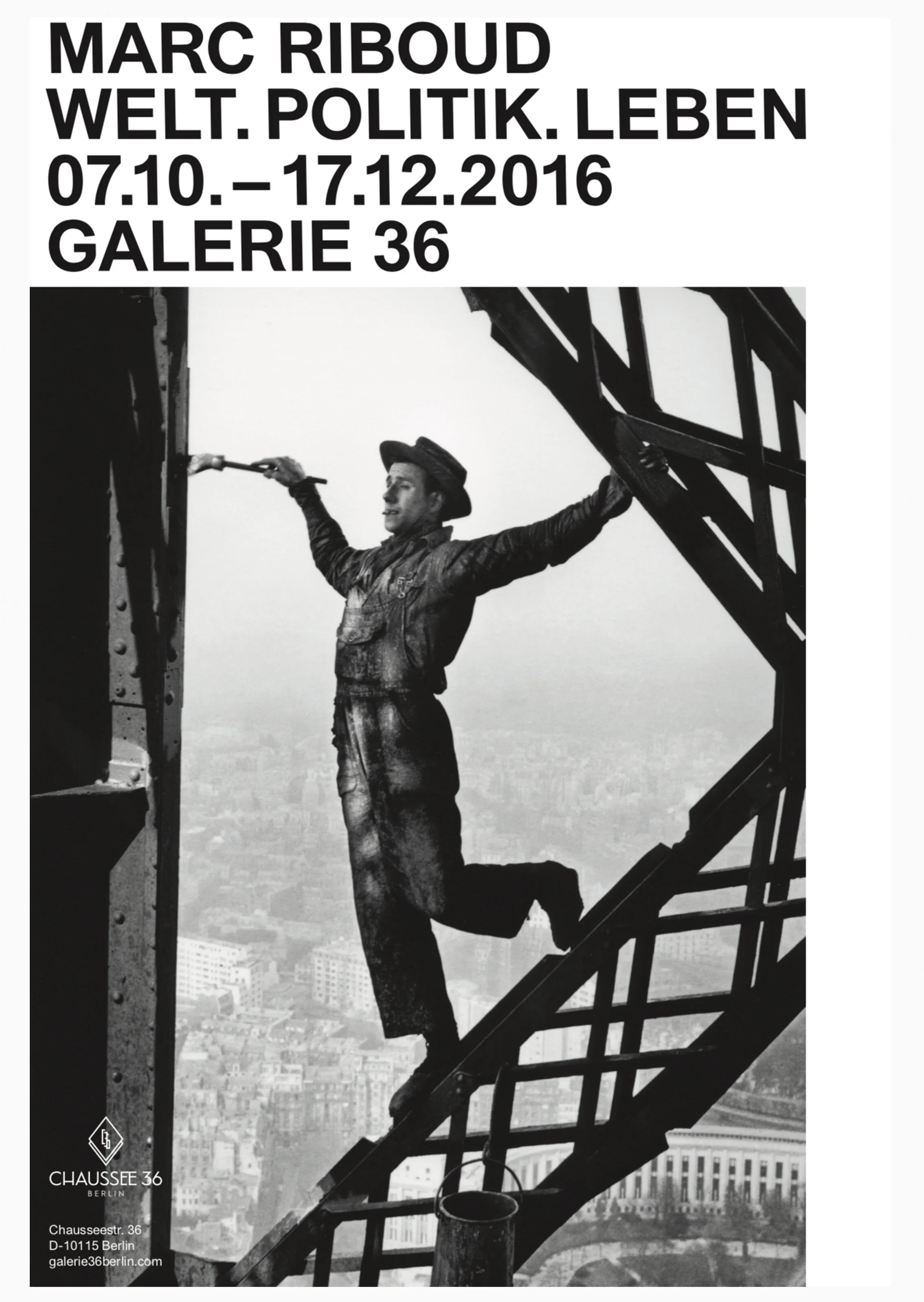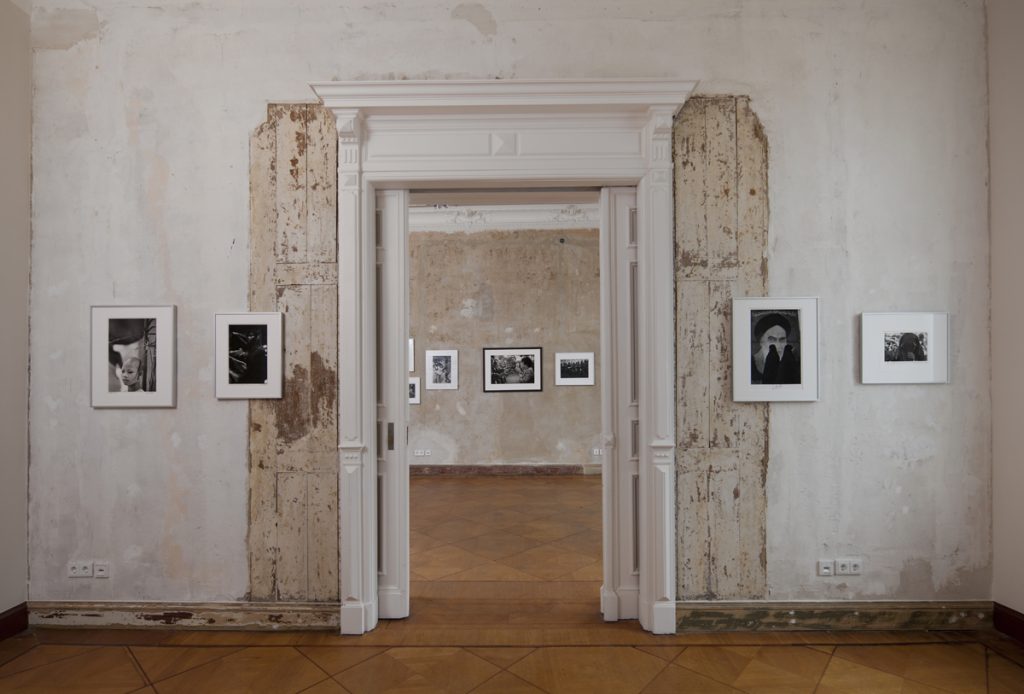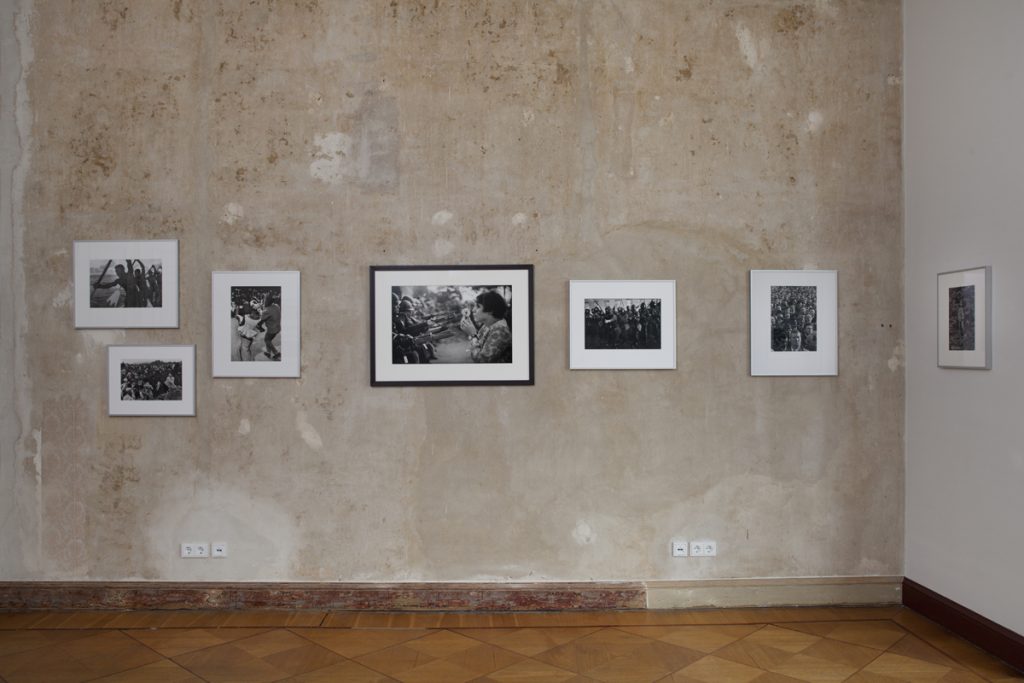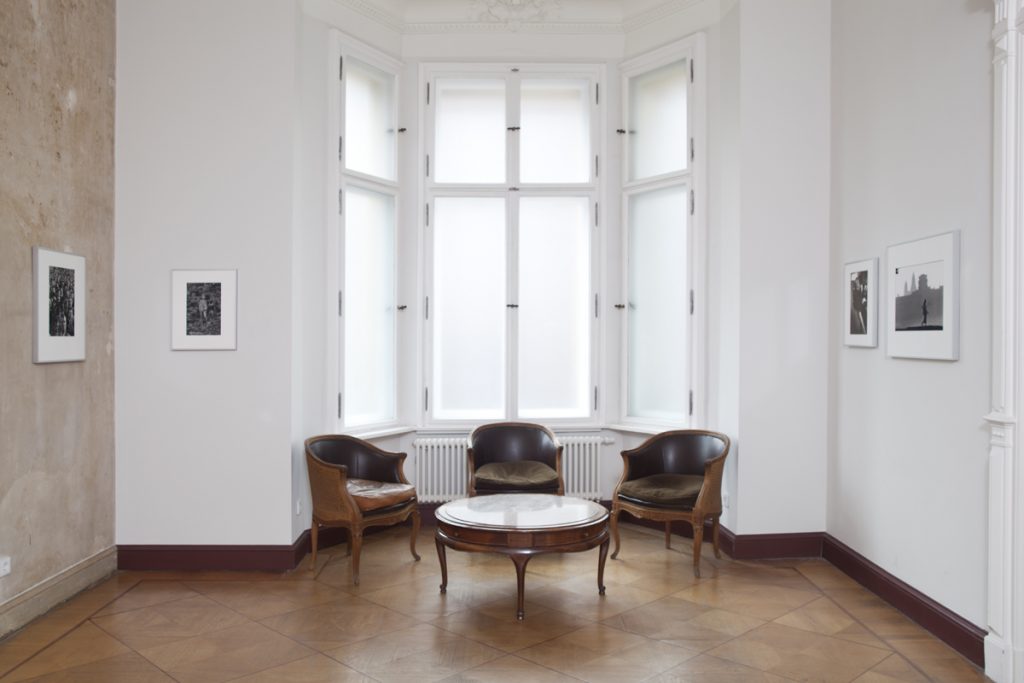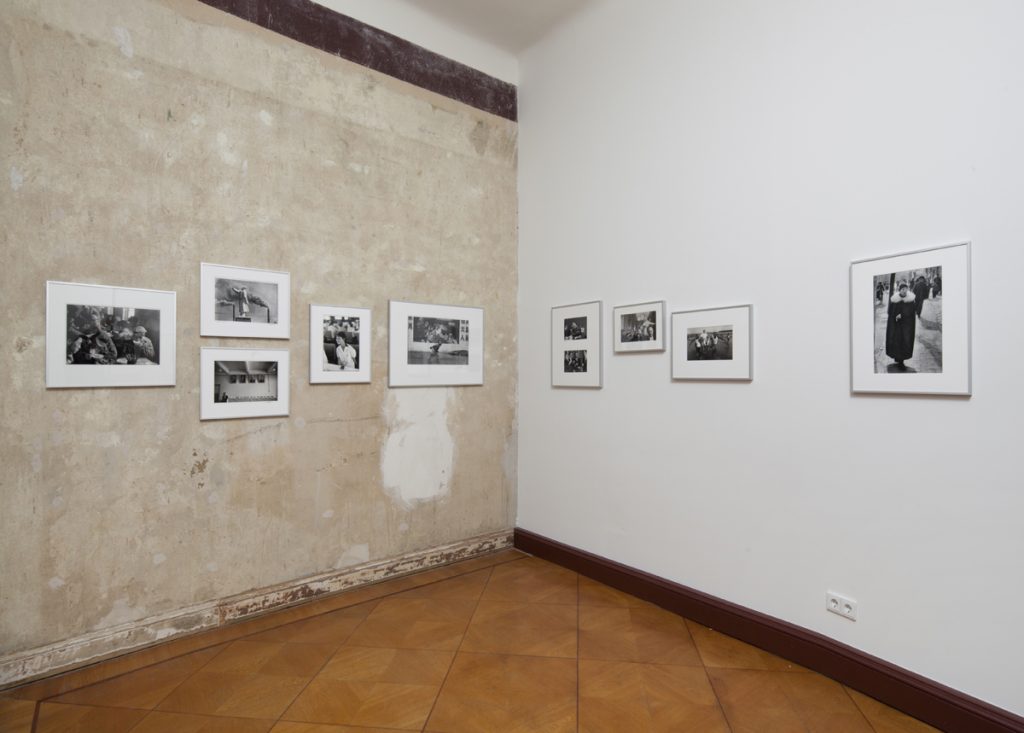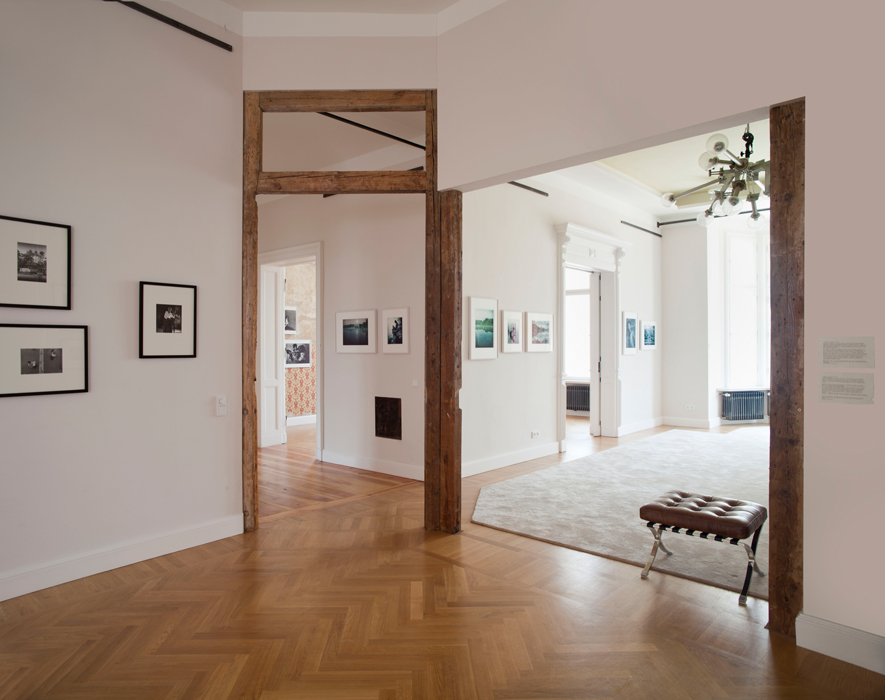Marc Riboud
— World. Politics. Life.
7 OCT - 12 DEC 2016
Galerie 36 presented the first solo exhibition in Berlin of the Parisian Magnum photographer Marc Riboud from 7th October until 17th December 2016. World. Politics. Life shows an excerpt of Marc Riboud’s extensive lifework. The exhibition confronts head of states like Winston Churchill, Mao and Fidel Castro portrayed by Riboud with photographs of daily life. This is a comparison that has not yet been drawn in this form bringing new aspects of his work to light. The connecting element is the representation of people. When Riboud depicts politicians in a private setting or in profane acts it demonstrates that what lies behind the façade is just another person. And the question arises whether it is not the dictator, but rather the anonymous faces working against the system that should remain in the collective memory. The masterpiece from Riboud, Painter of the Eiffel Tower will be presented among other works to be exhibited for the first time in Germany.
As a starting point for the exhibition at Galerie 36 is a poem by the author André Velter dedicated to Marc Riboud’s photographs. André Velter brings up two aspects of Riboud’s work: The portraits of head of states who shaped the world history of the 20th century and the photographs of unknown people to whom Marc Riboud paid particular attention. These photographs of daily life show Riboud’s regard for lasting impressions. With their strong, visual imagery they stand for humanity, innocence and joie de vivre in the midst of destruction and misery.
In the streets of Havana (on the left the results of the national lottery), Cuba1963
While the portraits of Winston Churchill, the young Dalai Lama and Fidel Castro draw attention to very different moments of global politics, the photographs from within the center of our society show life under respective political circumstances. Even these works became guiding principles, such as the photograph of the young girl from 1967 who raises a flower against soldiers with raised bayonets. This photograph is one of Riboud’s most famous works and became an iconic image for the peace movement against the Vietnam War. Further, his photographs of British doctors on strike in 1954 are very memorable portraits of the labour movement.
Marc Riboud (*1923) has been capturing global affairs for more than 60 years. In 1953 he joined the newly established photo agency Magnum Photos at the invitation of Henri Cartier-Bresson and Robert Capa. After a period of more than ten years as vice president (1959-1973) he was appointed president of Magnum Photos in 1975.
Riboud became famous for his photographic reports and travel photography from numerous countries among them India, China, Vietnam, Algeria and the former USSR. For decades he travelled the world, documented the Vietnam War and was one of the first European photographers who visited China during the rule of Mao Zedong.
Marc Riboud is honored for his oeuvre with numerous exhibitions – among them retrospectives in the Musée d’Art Moderne in Paris and the International Center of Photography in New York – as well as numerous awards and recognitions.
Marc Riboud’s photographs encourage us to reflect on how the world has changed, where we stand today and to where our voyage will take us in the future. The artist says about his work:
“Photography cannot change the world, but it can show the world when it is changing.”
Installation views, Chaussee 36, 2016

